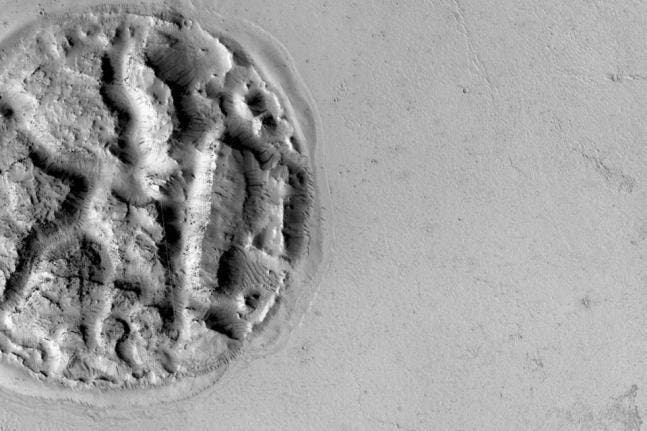A NASA probe has taken a picture of a surprising pie-like geological feature on Mars. Scientists are not yet sure what caused the feature, but the likely culprit is lava.

The 1.2 mile (1.9 km) wide feature was imaged by the HiRISE camera aboard NASA’s Mars Reconnaissance Orbiter (MRO) appears like an island of iron in a very smooth field. Judging by this, its appearance and the geological characteristics of Mars, scientists believe it was created by lava flows.
“Perhaps lava has intruded underneath this mound and pushed it up from beneath. It looks as if material is missing from the mound, so it is also possible that there was a significant amount of ice in the mound that was driven out by the heat of the lava,” NASA officials wrote in a description of the image, which was released on Wednesday (Dec. 3).
It’s been known since the 70s that volcanic features cover a large portion of the Martian surface. These features include extensive lava flows, vast lava plains, and the largest known volcanoes in the Solar System. There is evidence of volcanic activity from about 3.7 billion years ago to 500 million years ago, though some suspect the planet is also active today. There are many things we still don’t understand about the Martian geology.
“There are an array of features like this in the region that continue to puzzle scientists,” they added. “We hope that close inspection of this HiRISE image, and others around it, will provide some clues regarding its formation.”
The Martian Reconnaissance Orbiter is one of five active probes circling Mars at the moment. The other three are NASA’s Mars Odyssey and MAVEN spacecraft, India’s Mangalyaan probe and Europe’s Mars Express.
Was this helpful?



